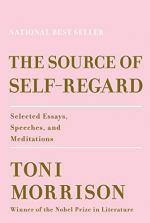
|
| Name: _________________________ | Period: ___________________ |
This test consists of 15 multiple choice questions and 5 short answer questions.
Multiple Choice Questions
1. In "The Slavebody and the Blackbody," Morrison says what about slavery?
(a) Writing about it can be cruel to modern African Americans.
(b) Most modern Americans do not have any historic ties to slavery.
(c) It is an ancient practice that is not always tied to racism.
(d) Slavery's consequences have been the same throughout history.
2. In "Race Matters," Morrison compares race to what?
(a) A set of clothing.
(b) A ladder.
(c) A map.
(d) A jailer.
3. In "Race Matters," Morrison creates a metaphorical comparison between "race-specific, race-free" language and what?
(a) Romantic love.
(b) Civil rights actions like the Selma bridge march.
(c) A church.
(d) A borderless, safe, outdoor space.
4. Which of the following is a key characteristic of globalism, according to Morrison?
(a) The Americanization of the world.
(b) Unity among workers.
(c) Celebration of diversity.
(d) Creating world peace.
5. In "Literature and Public Life," Morrison says that the public interest has been redefined as what?
(a) Extremism.
(b) Special interests.
(c) Class warfare.
(d) Private interest.
6. According to Morrison, identifying the race of a subject can have what unintended consequence?
(a) Better representation of marginalized communities.
(b) Inaccurately depicting race as "real" instead of as a "construct."
(c) Shaping public perception of whiteness.
(d) Perpetuating stereotypes and marginalizing minorities.
7. To whom does Morrison address her remarks about the dead of September 11, 2001?
(a) To the families of the dead.
(b) To the dead themselves.
(c) To all Americans.
(d) To the terrorists responsible for the deaths.
8. According to "Harlem on My Mind," why did the 1969 exhibit by the same name fail?
(a) It contained racist materials and did not include much art by African American artists.
(b) Critics did not understand the cultural aesthetics the exhibit represented.
(c) New York was not ready for Black art in 1969, and attendance was very low.
(d) The exhibit was too ambitious and tried to incorporate too many different kinds of art.
9. The art show Morrison discusses in "Harlem on My Mind" had a catalog with a forward written by whom?
(a) Toni Morrison.
(b) Romare Bearden.
(c) A high-school student.
(d) The city parks commissioner.
10. In "A Race in Mind," Morrison asks for more thoughtful work from what group?
(a) The press.
(b) Government.
(c) Authors.
(d) Art critics.
11. What question does Morrison say is at the center of of government?
(a) Distribution of wealth.
(b) Creating peace and security.
(c) Control over history's narrative.
(d) Cultural apartheid or integration.
12. "Noblesse oblige" is a philosophy that urged the nobility to do what?
(a) Prevent strangers from entering their lands.
(b) Seize power from the church.
(c) Accumulate as much land as possible.
(d) Share their wealth.
13. What does Morrison say is at its greatest height since the time of the slave trade?
(a) The opening of boarders.
(b) The mass movement of people.
(c) Globalism.
(d) Legislative attempts to integrate newcomers.
14. The Radiance of the King is a novel by Camara Laye, an author of what origin?
(a) European.
(b) North American.
(c) African.
(d) Asian.
15. In "Literature and Public Life," Morrison says that we live in the age of what?
(a) Resignation.
(b) Inquiry.
(c) Conscience.
(d) Spectacle.
Short Answer Questions
1. In "Cinderella's Stepsisters," Morrison points out that in the original Grimm's version, the stepsisters were what?
2. In "Black Matter(s)," what does Morrison say she means by "American Africanism"?
3. In "Cinderella's Stepsisters," Morrison's central claim is that women should not do what?
4. In "Cinderella's Stepsisters," Morrison says that we must use freedom to do what?
5. In "Moral Inhabitants," Morrison says that the ability to make fine distinctions shows what?
|
This section contains 632 words (approx. 3 pages at 300 words per page) |

|




